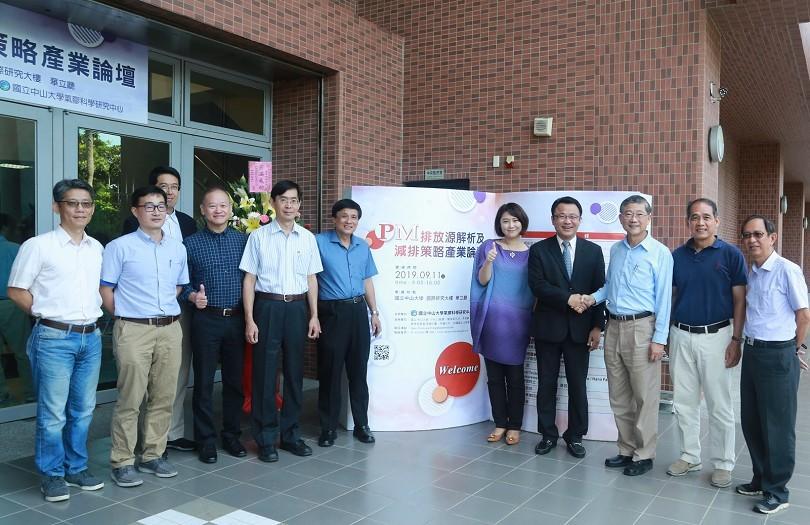
For Saving Air Pollution and Fighting PM2.5 by Forum of NSYSU
A recent local study found that the rising incidence of lung adenocarcinoma among people may be related to air pollution. In Gaoping areas where air pollution is serious, the annual increase rate of lung adenocarcinoma is more than 15 times that of the north. The Aerosol Science Research Center of National Sun Yat-sen University held the "PM Emission Source Analysis and Emission Reduction Strategy Industry Forum" today (11), inviting several experts and scholars to publish the latest emission source analysis technology and propose effective emission reduction strategies, find out the source of air pollution and rescues air quality.
I-Yu Huang, Vice President of Sun Yat-Sen University, pointed out that global air pollution and PM2.5 problems are quite serious, which greatly impact the ecological environment and health of human beings. Therefore, people must understand the current emission characteristics of various pollution sources thoroughly. Sun Yat-sen University has established the only PM2.5 aerosol scientific research center in Asia. It is committed to the basic research of aerosol, the influence of aerosol on the atmosphere, ocean, environment, human health, and even the application of aerosol in the field of biomedicine. Able to fulfill the university's social responsibilities with "public think tanks, local participation, and pursuit of excellence" and "Analyzing PM2.5 can't just look at the concentration, it is the key to crack the chemical composition of the aerosol!" Associate Professor Chia C. Wang, the Director of the Aerosol Science Research Center at National Sun Yat-sen University, emphasized that air pollution and aerosols have a profound impact on the environment and human health, and the development of cutting-edge novel Emission source analysis methods and finding effective emission reduction strategies are undoubtedly urgent tasks. It is hoped that through the forum, we can combine the strength of the academic community and the industry to brainstorm, improve the quality of air pollution, and reduce the impact of current air pollution and suspended particulate matter on the environment and public health.
Wei-Hsiang Chen, Associate Professor at the Institute of Environmental Engineering of Sun Yat-sen University, said that the Kaohsiung metropolitan area is a region with more serious air pollution due to factors such as a large number of factories and frequent traffic. Among them, suspended particulates are factors that affect the deterioration of empty products in the Kaohsiung metropolitan area, and fugitive particulate pollutants emitted from the raw material storage area of the steel industry are also possible sources. Therefore, associate Professor Wei-Hsiang Chen collects data on fugitive emission sources, combustible emission sources, and the concentration of fine suspended particulates and heavy metals in the upper and lower winds of the site to evaluate the potential trends of their health effects. In addition, to assist the reduction of fugitive dust emissions from coal storage yards, the two dust removal technologies, water mist and water spray, are compared to see which is more efficient as a reference for dust suppression and emission reduction technologies.
Chao-Yu Chung, Assistant Professor of the Department of Chemistry, Sun Yat-sen University, is committed to developing high-sensitivity infrared absorption spectroscopy and microscopy. He mentioned that the aerosol particles produced by industrial activities or other sources often contain various chemical substances. Hence, the goal of developing an ultra-sensitive infrared spectrometer is to hope that the aerosol particles can be used without destroying the composition of the aerosol particles. Furthermore, perform an in-depth analysis of aerosol particles in real-time, greatly improving accuracy.


